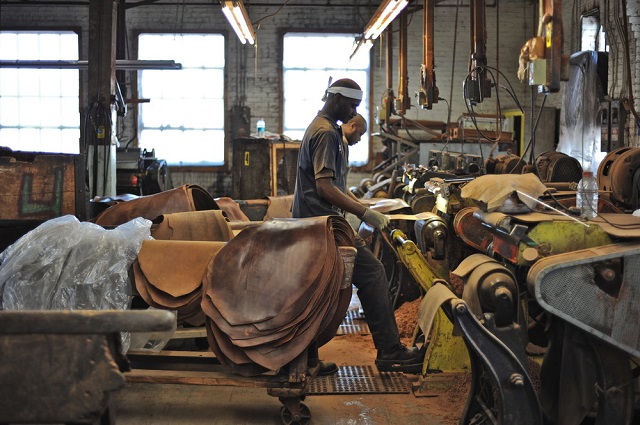
Nairobi, Kenya | Xinhua | The East African Community (EAC) is losing revenue due to low investments in value addition of horticulture and leather produced in the region, says a report released on Thursday.
According to the report by East African Business Council (EABC), a private business lobby of the trading bloc, the region provides a good resource base for the production of hides and skins, having approximately 188.1 million livestock.
“Despite East Africa currently having a monthly demand of about 600,000 pairs of industrial shoes, production is only about 60,000 shoes per month,” says the report on building the leather, fruits and vegetable value chains in the EAC that was launched virtually.
The findings show that the economic bloc mostly processes leather up to the wet blue stage with minimal transformation to finished leather implying in effect lost opportunity of close to 347 billion Kenyan shillings (about 3.2 billion U.S. dollars) in the last four years through exports of semi-processed goods.
Peter Mathuki, CEO of EABC said the leather industry has stagnated due to the high presence of imported used footwear as well as synthetic shoes.
“These imports are priced way below the production costs of local producers, thus reducing the market for a sector that is still not getting adequate financing,” he said.
The findings indicate that there is also a huge opportunity for increasing economic growth in the horticulture sector as exports of manufactured goods remain limited.
According to the report by EABC, most farmers have limited finances for capital investment and purchase of modern inputs while lack of processing facilities close to the sources of the produce has also deterred the region from fully exploiting the potential of the sector.
The analysis indicates that appropriate infrastructure for marketing and proper post-harvest handling can tremendously reduce losses that horticulture farmers face in the region.
The report recommends EAC partner states to abolish import tariffs and Value Added Tax on imported seeds and seedlings plus other inputs in order to boost the competitiveness of horticultural farmers.
******
Xinhua
 The Independent Uganda: You get the Truth we Pay the Price
The Independent Uganda: You get the Truth we Pay the Price


